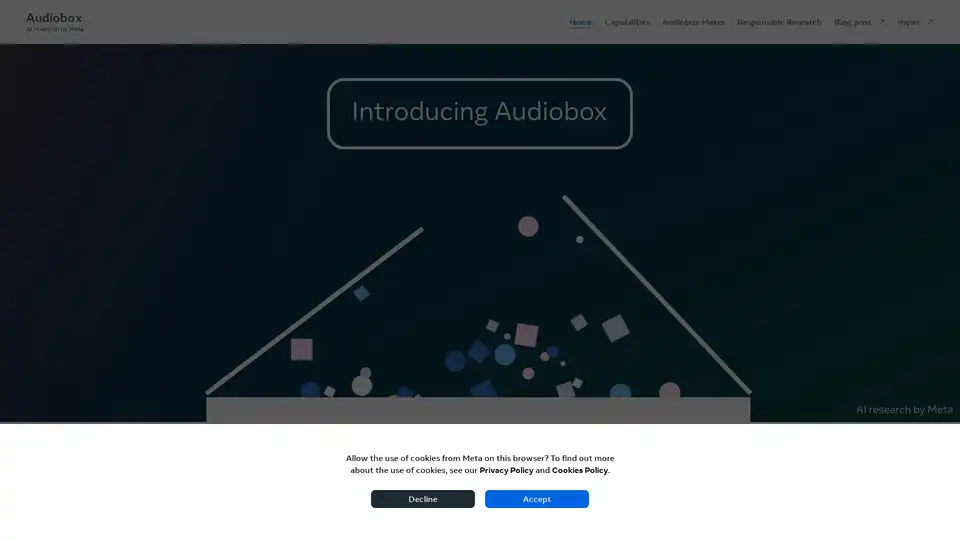
Audiobox
Overview of Audiobox
What is Audiobox?
Audiobox represents a groundbreaking advancement in AI audio generation, developed by Meta's FAIR (Fundamental AI Research) team. As a foundation research model, Audiobox enables users to create high-quality audio content effortlessly. At its core, it transforms ideas into sounds by leveraging voice inputs and natural language text prompts. Whether you're aiming to synthesize realistic voices, craft immersive sound effects, or build entire audio stories, Audiobox democratizes audio creation, making it accessible to creators without needing advanced technical skills or expensive equipment.
This model stands out in the landscape of AI audio tools because it's built on a shared self-supervised learning framework called Audiobox SSL, which powers a family of specialized models including Audiobox Speech for voice generation and Audiobox Sound for effects. By combining these elements, Audiobox not only generates audio but also ensures consistency and quality across diverse applications, from podcasts to video production.
How Does Audiobox Work?
Audiobox operates through a sophisticated architecture that integrates self-supervised learning with generative AI techniques. The foundational Audiobox SSL model is pre-trained on vast amounts of unlabeled audio data, allowing it to learn patterns in speech, music, and environmental sounds without explicit supervision. This self-supervised approach captures the nuances of audio, such as tone, pitch, and rhythm, enabling the model to understand and replicate complex soundscapes.
Once trained, users interact with Audiobox via natural language prompts—simple text descriptions like "a cheerful robot voice narrating a sci-fi story" or "thunderstorm with distant echoes." For enhanced control, you can incorporate voice inputs, where the model clones or modifies existing audio clips to match the prompt. The process involves:
- Input Processing: Text prompts are tokenized and fed into the model alongside optional voice samples.
- Generation Phase: The AI predicts and synthesizes audio waveforms, ensuring seamless blending of elements.
- Output Refinement: Models like Audiobox Speech focus on natural-sounding dialogue, while Audiobox Sound handles non-verbal effects, all unified under the SSL backbone for coherence.
Meta emphasizes responsible AI development, incorporating safeguards to mitigate biases and ensure ethical use. For instance, the models are designed to avoid generating harmful content, aligning with broader commitments to safe AI deployment.
Core Capabilities of Audiobox
Audiobox's versatility shines through its interactive demos, which allow users to explore key features hands-on. Here's a breakdown of its primary capabilities:
- Voice Synthesis and Cloning: Generate lifelike voices from text, including emotional inflections and accents. Ideal for dubbing, virtual assistants, or personalized narrations.
- Sound Effects Creation: Produce custom environmental sounds, such as rain on a window or a bustling city street, using descriptive prompts.
- Audio Story Building: Through the Audiobox Maker tool, users can chain multiple generations to create full audio narratives, complete with dialogue and background scores.
- Multimodal Inputs: Combine text and voice for hybrid outputs, enabling remix-style audio editing without traditional software.
These features are accessible via web-based demos, where you can play, tweak, and download results instantly. The system's low-latency generation makes it suitable for real-time applications, though as a research model, it's currently optimized for creative exploration rather than production-scale deployment.
How to Use Audiobox
Getting started with Audiobox is straightforward, especially through its online platform. Visit the official Meta FAIR page for Audiobox to access the home interface, which includes sections for capabilities, maker tools, and research resources.
- Explore Demos: Navigate to the "Capabilities" section to try individual features. Input a text prompt, add a voice sample if desired, and generate audio previews.
- Create with Audiobox Maker: Head to the dedicated maker tool to build stories. Select elements like characters, settings, and actions via prompts, then let the AI assemble a cohesive audio piece. Download MP3 files to share or integrate into projects.
- Dive into Research: For deeper understanding, read the accompanying blog post or technical paper, which detail the model's architecture, training data, and evaluation metrics.
No downloads or installations are required—it's all browser-based, ensuring broad accessibility. Meta also offers research grants for those interested in extending Audiobox's applications, fostering innovation in AI audio research.
Use Cases and Practical Value
Audiobox unlocks a world of possibilities across creative and professional domains. Content creators can produce podcast episodes or YouTube voiceovers in minutes, saving hours of manual recording. Filmmakers and game developers benefit from on-demand sound design, enhancing immersion without hiring sound engineers. Educators might use it to generate narrated lessons or audiobooks, making learning more engaging for diverse audiences.
In marketing, Audiobox aids in crafting personalized ad audio, while developers can prototype voice interfaces for apps. Its value lies in efficiency: reducing production costs by up to 80% for audio tasks, according to similar AI tools' benchmarks. Plus, the open research ethos encourages community contributions, potentially leading to fine-tuned versions for specific industries like accessibility tools for the hearing impaired.
Who is Audiobox For?
This tool is perfect for a wide audience:
- Aspiring Creators: Hobbyists and storytellers who want to experiment with audio without barriers.
- Professional Media Teams: Podcasters, video editors, and musicians seeking quick prototypes.
- Researchers and Developers: AI enthusiasts exploring generative models or building upon self-supervised audio tech.
- Businesses: Companies in entertainment, education, or advertising needing scalable audio solutions.
While primarily research-oriented, its demos make it approachable for non-experts, though advanced users will appreciate the technical depth in the paper.
Why Choose Audiobox Over Other AI Audio Tools?
In a crowded market of text-to-speech and sound generators, Audiobox differentiates with its foundation model approach, offering greater flexibility than rigid, single-purpose tools. Unlike commercial services that charge per minute, Audiobox's research focus provides free access to cutting-edge capabilities. Its emphasis on safety—through bias detection and usage guidelines—builds trust, especially for ethical AI adoption.
Meta's track record in FAIR research ensures rigorous validation; the model outperforms baselines in metrics like naturalness and diversity, as outlined in the paper. For those searching for the best way to generate AI audio from text prompts, Audiobox delivers innovative, high-fidelity results that inspire creativity.
Potential Limitations and Future Outlook
As a research prototype, Audiobox may have constraints like generation length limits or occasional artifacts in complex scenes. However, Meta's commitment to iteration promises enhancements, potentially including API access or integrations with tools like Unity for game audio.
In summary, Audiobox isn't just an AI audio generation tool—it's a catalyst for how we interact with sound in the digital age. By blending natural language understanding with audio synthesis, it empowers users to turn ideas into auditory experiences, revolutionizing content creation for years to come.
Best Alternative Tools to "Audiobox"
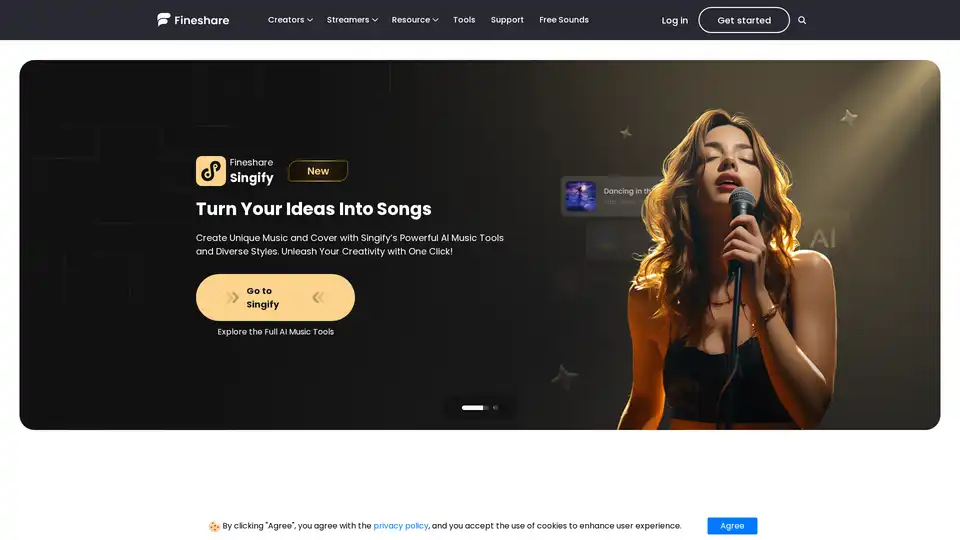
Fineshare offers advanced AI audio tools for generating realistic voices, music, and sound effects. Simplify your audio projects with AI voice cloning, text-to-speech, and voice changing features.
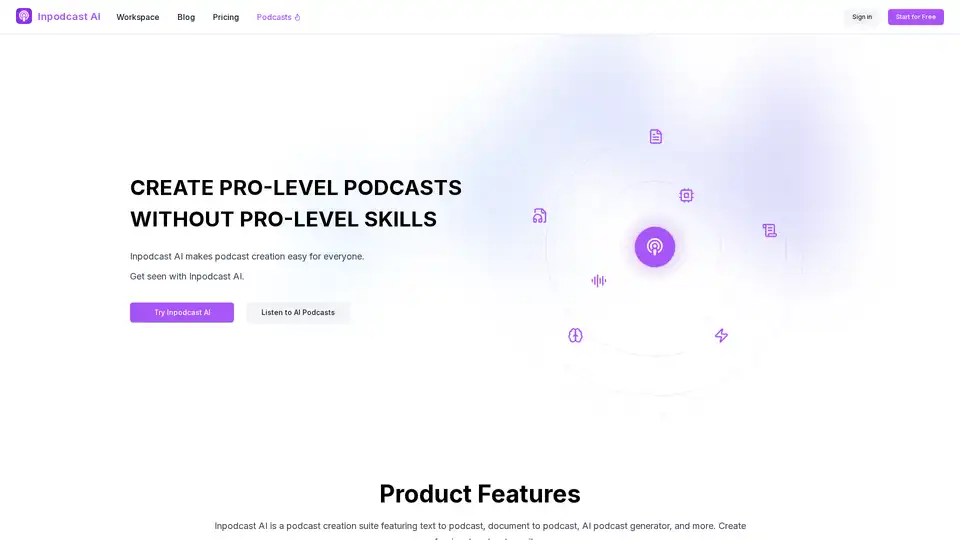
Inpodcast AI is a podcast creation suite that makes it easy for anyone to create professional-level podcasts. Features include document to podcast, script to podcast, and text to speech.
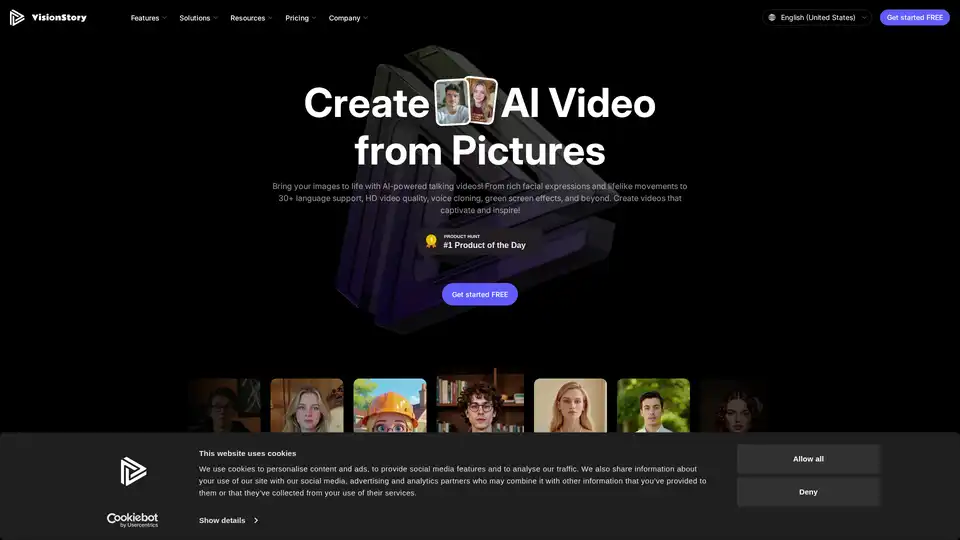
VisionStory is an AI-powered platform that creates talking videos from images. It offers features like emotion control, voice cloning, and green screen effects, making it ideal for content creators, marketers, and educators.
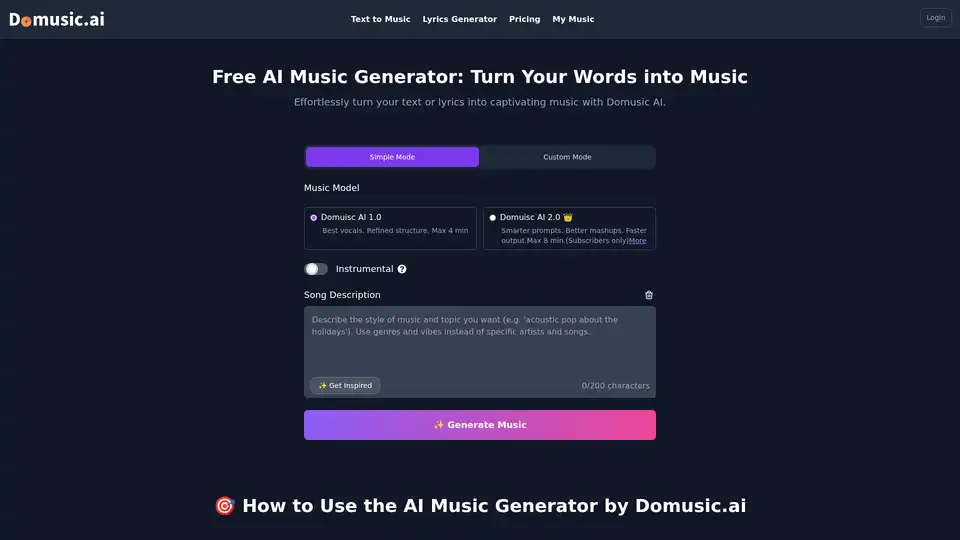
Domusic AI is a free online AI music generator that transforms text prompts or custom lyrics into professional-quality songs within minutes. Perfect for content creators, musicians, and anyone wanting to create royalty-free music without musical expertise.
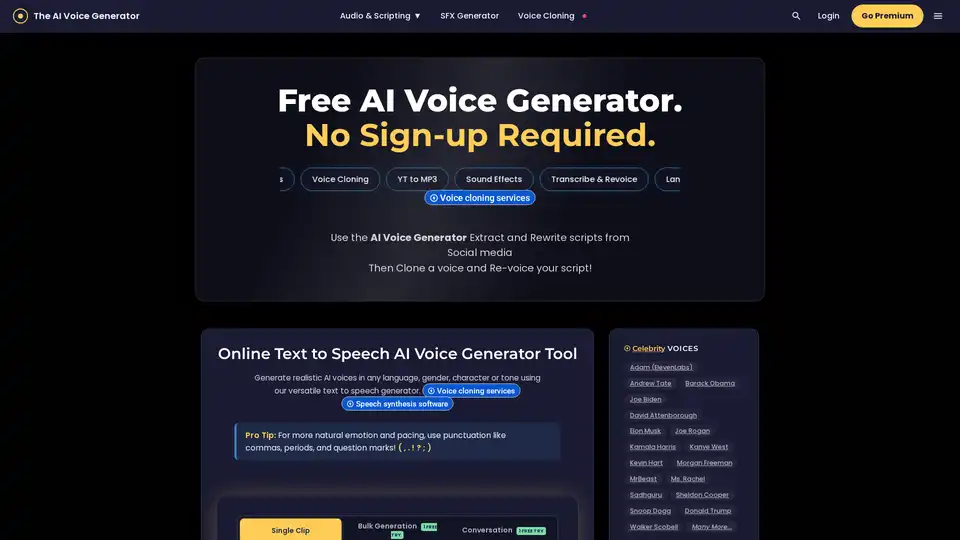
Create AI voice clips with any character using the AI Voice Generator. Features celebrity voices, multilingual TTS, and voice cloning. No signup required.
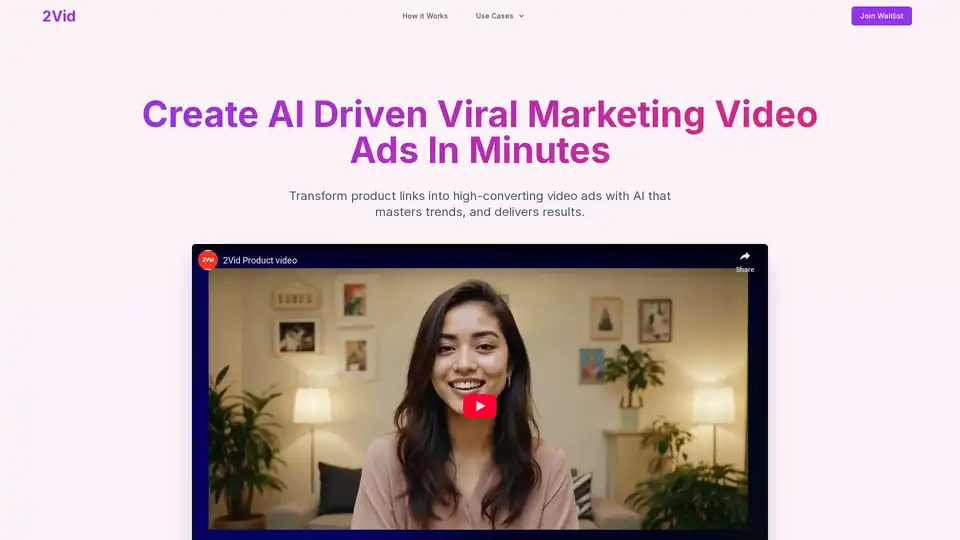
2Vid is an AI-powered platform that turns product links into engaging viral marketing video ads in minutes, featuring AI actors, B-roll, and lipsync for personalized content.
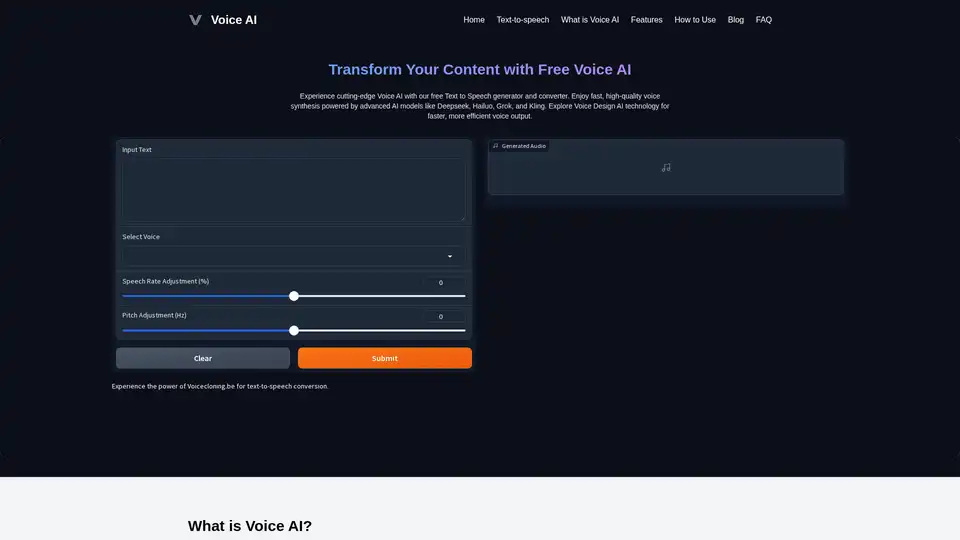
Experience cutting-edge Voice AI with our free Text to Speech generator and converter. Enjoy fast, high-quality voice synthesis powered by advanced AI models like Deepseek, Hailuo, Grok, and Kling for natural, expressive speech in various applications.
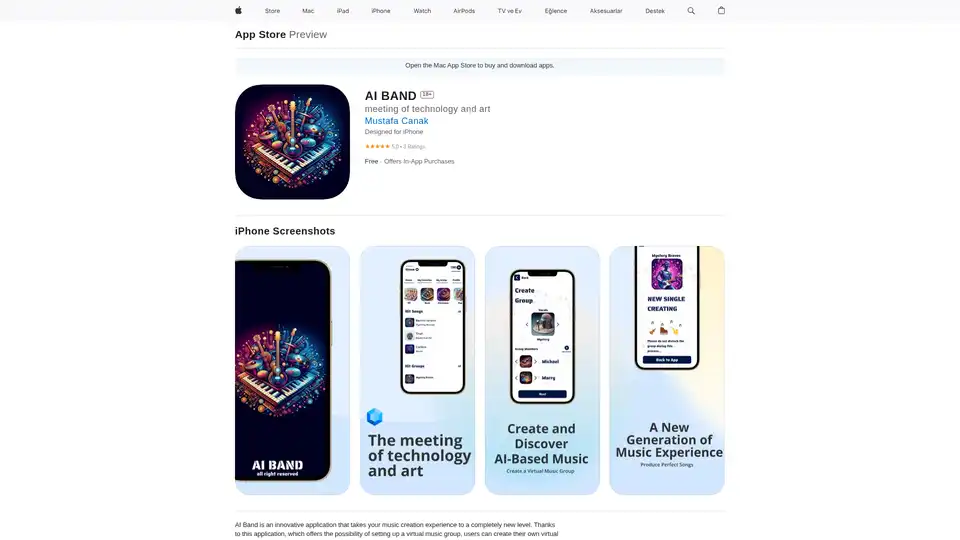
AI Band revolutionizes music creation on iOS with virtual AI bands. Build custom groups, generate tracks using AI, interact with members, and explore community music for endless inspiration.
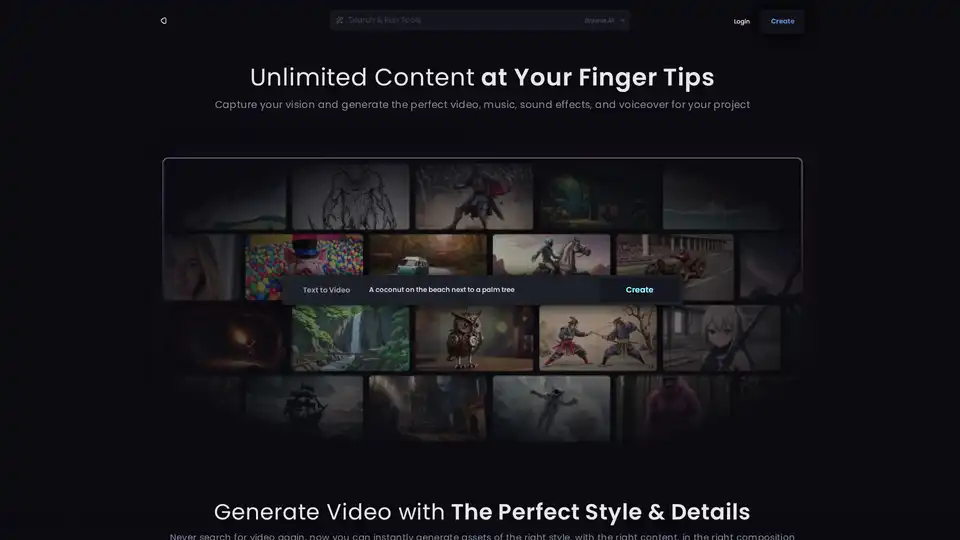
Reel Studio empowers creators with AI to generate stunning videos, music, sound effects, and voiceovers from text, images, or drawings. Ideal for YouTube, TikTok, and Instagram content in various styles.
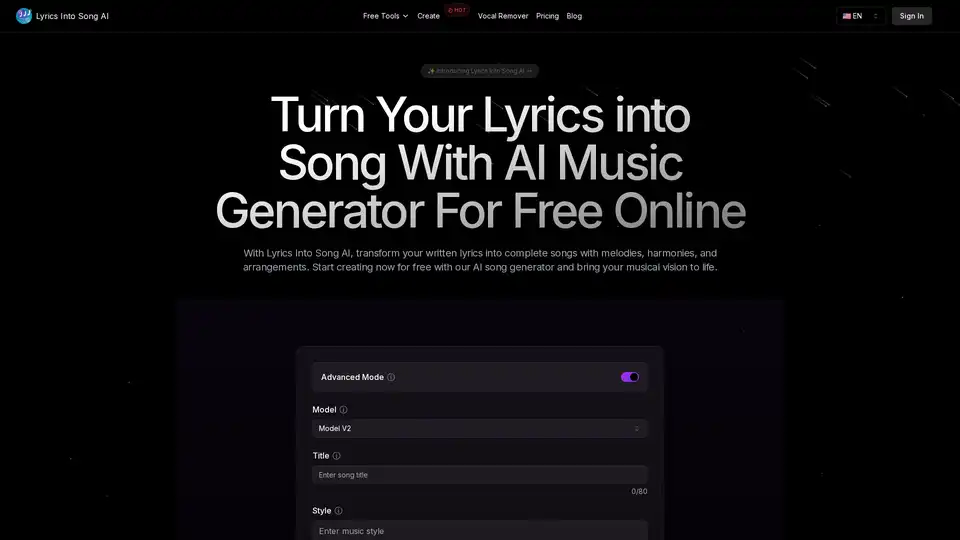
Lyrics Into Song AI uses advanced AI music generator technology to transform written lyrics into beautiful, original songs. Perfect for songwriters, musicians looking for an AI song generator solution. No Login Required.
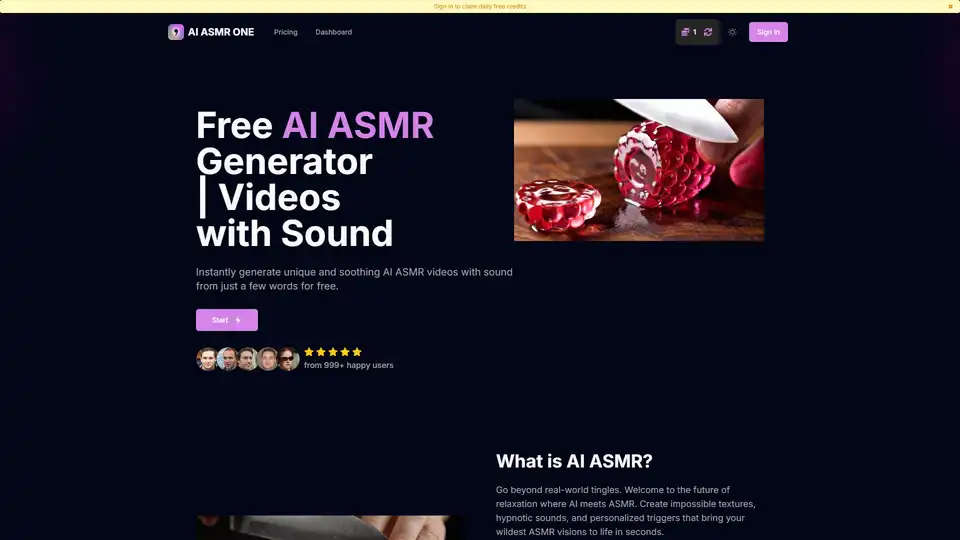
Discover AI ASMR ONE, the free tool to instantly generate unique, soothing ASMR videos with synchronized sounds from simple text prompts. Perfect for personalized relaxation and creative triggers.
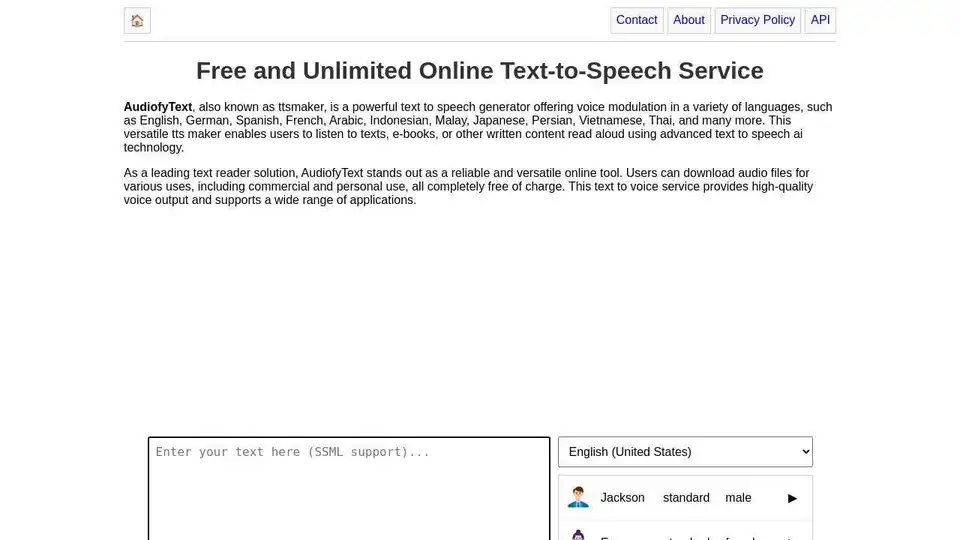
AudiofyText (ttsmaker) is a free online text to speech converter with natural-sounding voices. Convert text to speech online, supporting multiple languages and MP3 downloads.

Experience the future of video creation with SuperMaker AI, an all-in-one AI Video Generator for AI music, image, and voice. Create cinema-quality videos effortlessly. Start free, no login required!
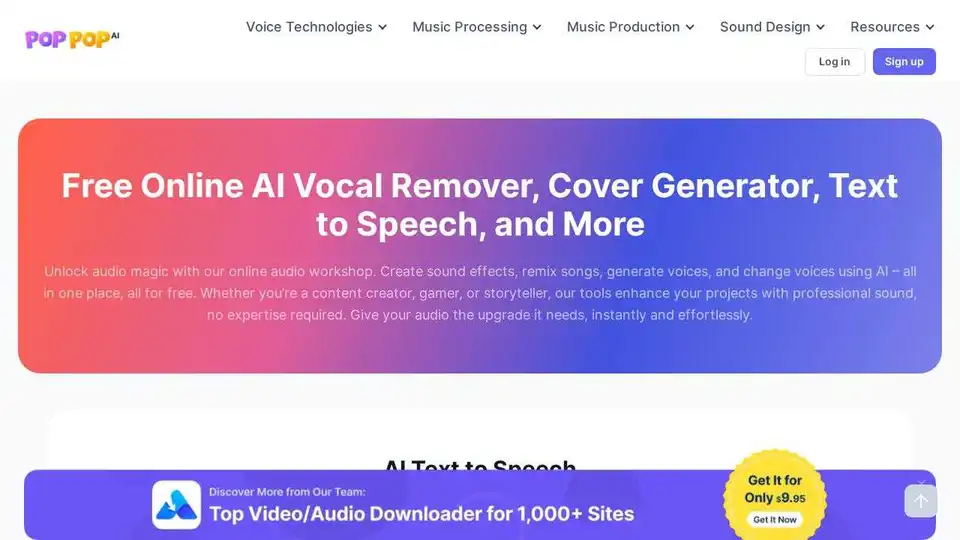
PopPop AI is a free online audio workstation with AI tools like text-to-speech, vocal remover, SFX generator, and song cover generator. Enhance your audio projects effortlessly!
